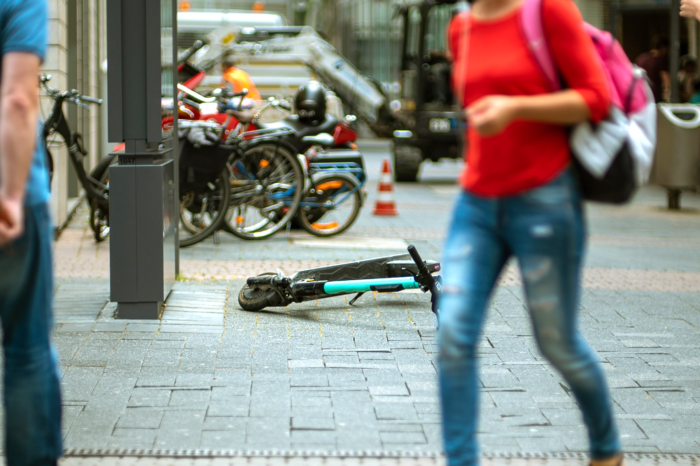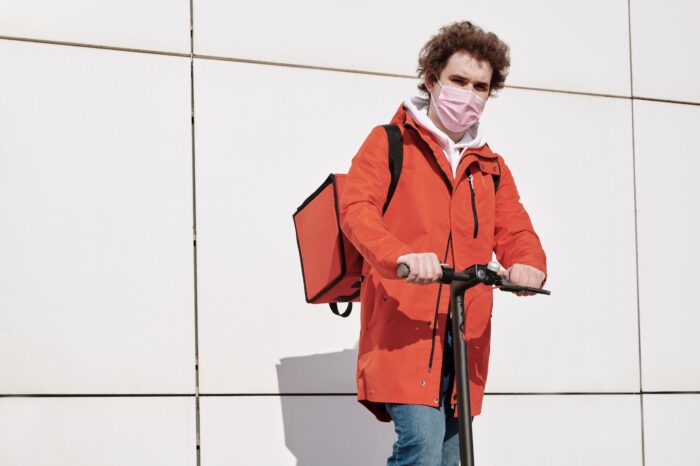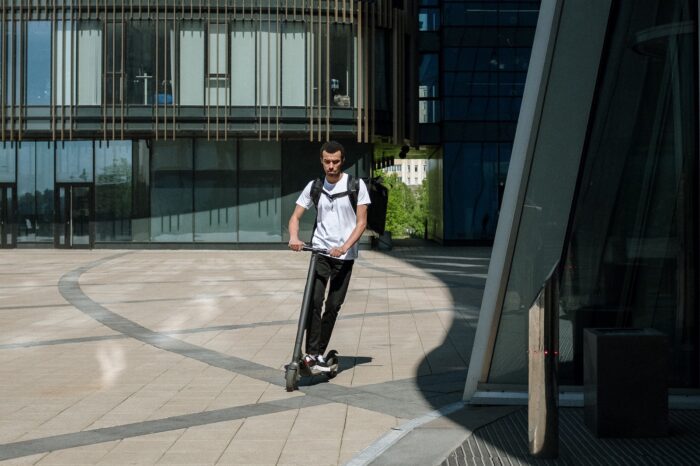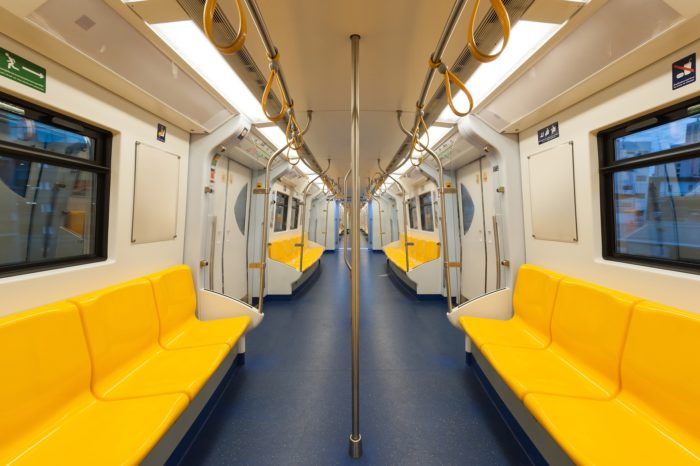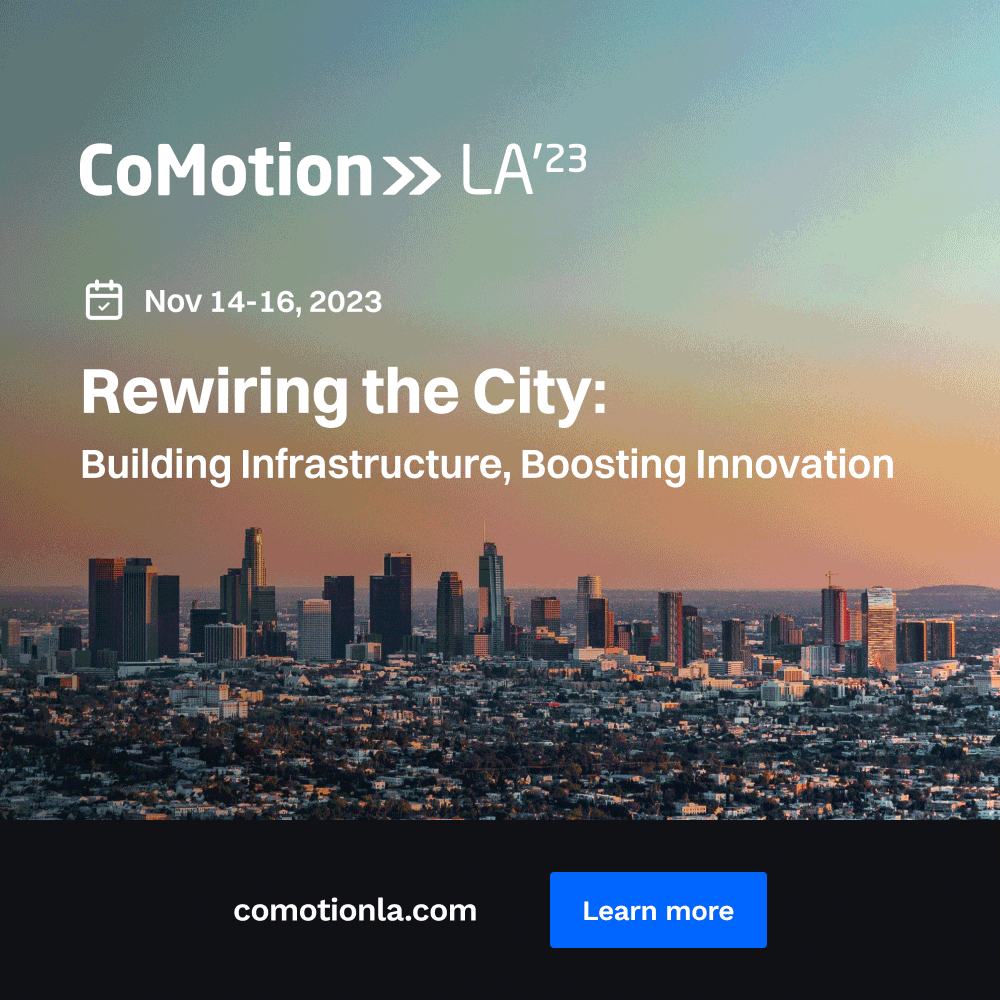Gotcha’s CEO On How The Micromobility Operator Has The Resiliency To Withstand These Troubled Times

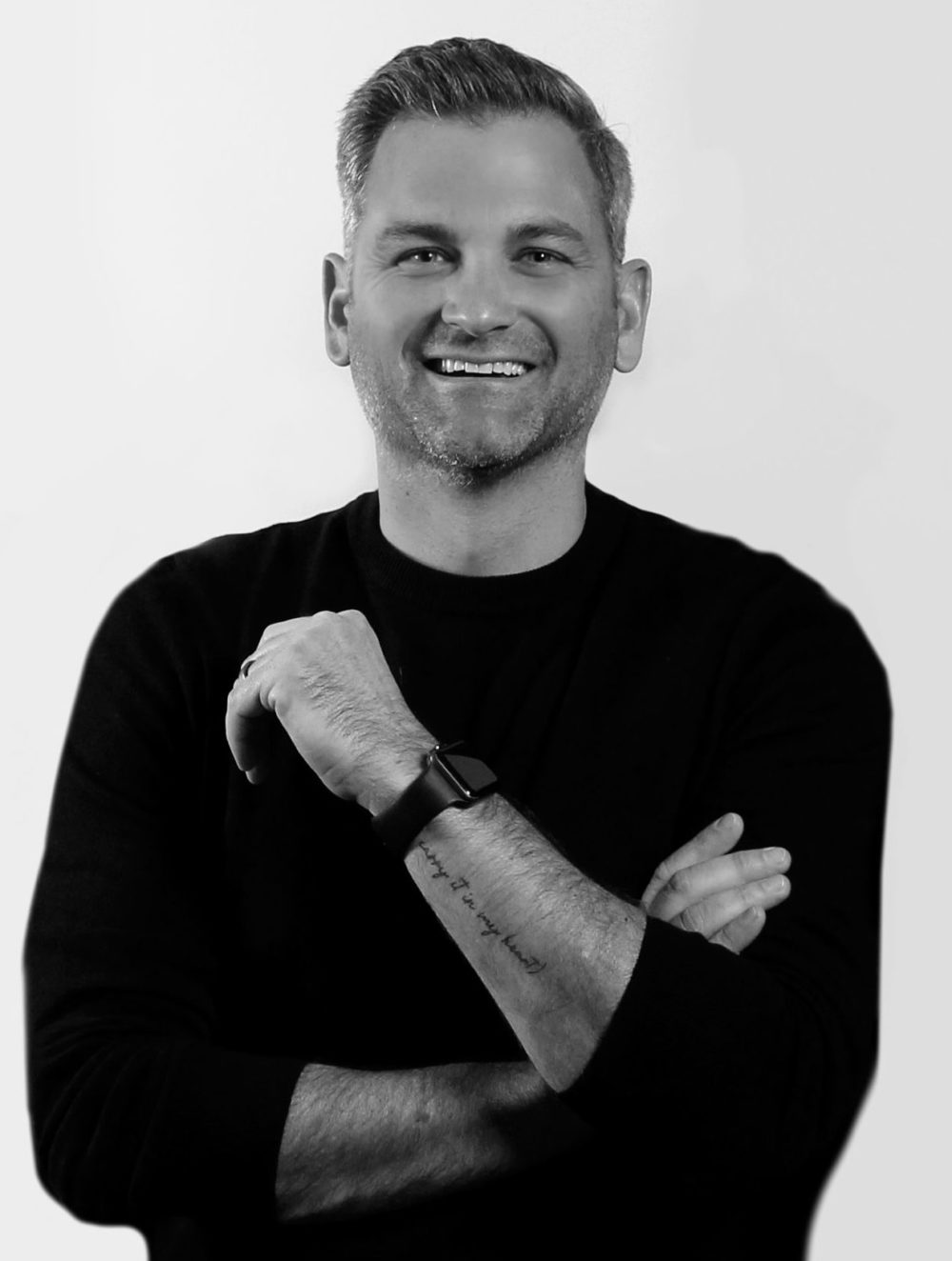
Sean Flood, CEO of Gotcha Mobility
As the coronavirus pandemic is straining the economy, a lot of the micromobility sector is feeling the squeeze. What’s the key to surviving a potentially months long rough patch like this? Consolidation, variety, and a strong balance sheet. Newly formed Last Mile Holdings has all those and more.
Last Mile, recently created from the former OjO Electric Corp., just acquired Gotcha Mobility as a wholly owned subsidiary. Sean Flood, CEO and Founder of Gotcha Mobility, was in turn appointed Director of Last Mile, bringing his ten years of micromobility operations experience. In that time, Flood has grown Gotcha into a micromobility powerhouse in its own right. With a variety of small form factor offerings, from e-scooters, to e-bikes/trikes and more, Last Mile / Gotcha stands a real chance to not only weather the storm of a global recession, but to even continue to thrive despite it.
CoMotion was able to sit down (virtually) with Flood, and gain a little insight into how things have been going since the acquisition, what really differentiates Last Mile / Gotcha from its competitors, and how the company will move onward and upward despite these troubled times.
***
First off, congratulations on the acquisition news; it’s certainly never a dull moment in the micromobility space. Can you tell us a little bit about how the tie-up with OjO & Last Mile came to be?
First, I’ll give you a quick little history. So Gotcha, I started over 12 years ago, originally as an electric rideshare company, pre Uber and Lyft, focused on college towns. We scaled slowly at first, kind of over the first five or six years as mobility wasn’t really an industry, and then the last, really three years is where we saw just massive growth and I think we went from 15 or 16 systems to 108 different cities and universities under contract. As we were looking to scale and launch I kind of looked at the market and I just thought consolidation of like minded companies was the better path forward. I think that’ll continue to happen. I met the then CEO of OjO, Matt Smith, and we seemed to think very similarly and they were a smaller company but were publicly traded, so access to capital was important, but it really just seemed like a good synergistic relationship. After doing it for 12 years I think I’ve got pretty good knowledge of this space, and consolidation is probably the next leg of the industry, and I figured we’d help lead that instead of waiting to see how it unfolded.
What are the upsides of combining multiple micromobility companies like this?
There’s a few big players who have been well-capitalized—I don’t know if they’re as well capitalized today with the markets—but there’s been some big folks, I think what we stayed real true to is this idea of partnership. Very similar to what I started with 12 years ago, we partner with a city, we partner with a university, they’re typically long term agreements more often than not they’re exclusive so we’re the only provider. We’re not a scooter company, we’re not a bike company, we’re a shared mobility company, which is why the breadth of product is so important, because we want our partners to be able to pick from these different products to fill their needs. So that’s always been our ethos, which I think is why we’ve lasted so long and why I think we’ll continue to last. And what we saw in OjO is that they have another product, they have a sit down scooter that we have not yet deployed, so we liked that idea, and their team thought similarly with the idea of partnership and not just deploying assets and asking for forgiveness later. I think the outcome is going to be a stronger business with more products, access to capital, which is very above our kind of now publicly traded status, and I think just an executional plan. Even during the virus, we’re staying very true to our partnership and execution plan and I think that’s a positive path through it.
People view the stakes in my opinion sometimes incorrectly and I think it’s because of the idea of blitz-scaling and how you grow a business. I think the app world can’t be translated to the physical asset world, which is what shared mobility is. It’s not really a land grab, it’s a long term play of being the partner of choice.
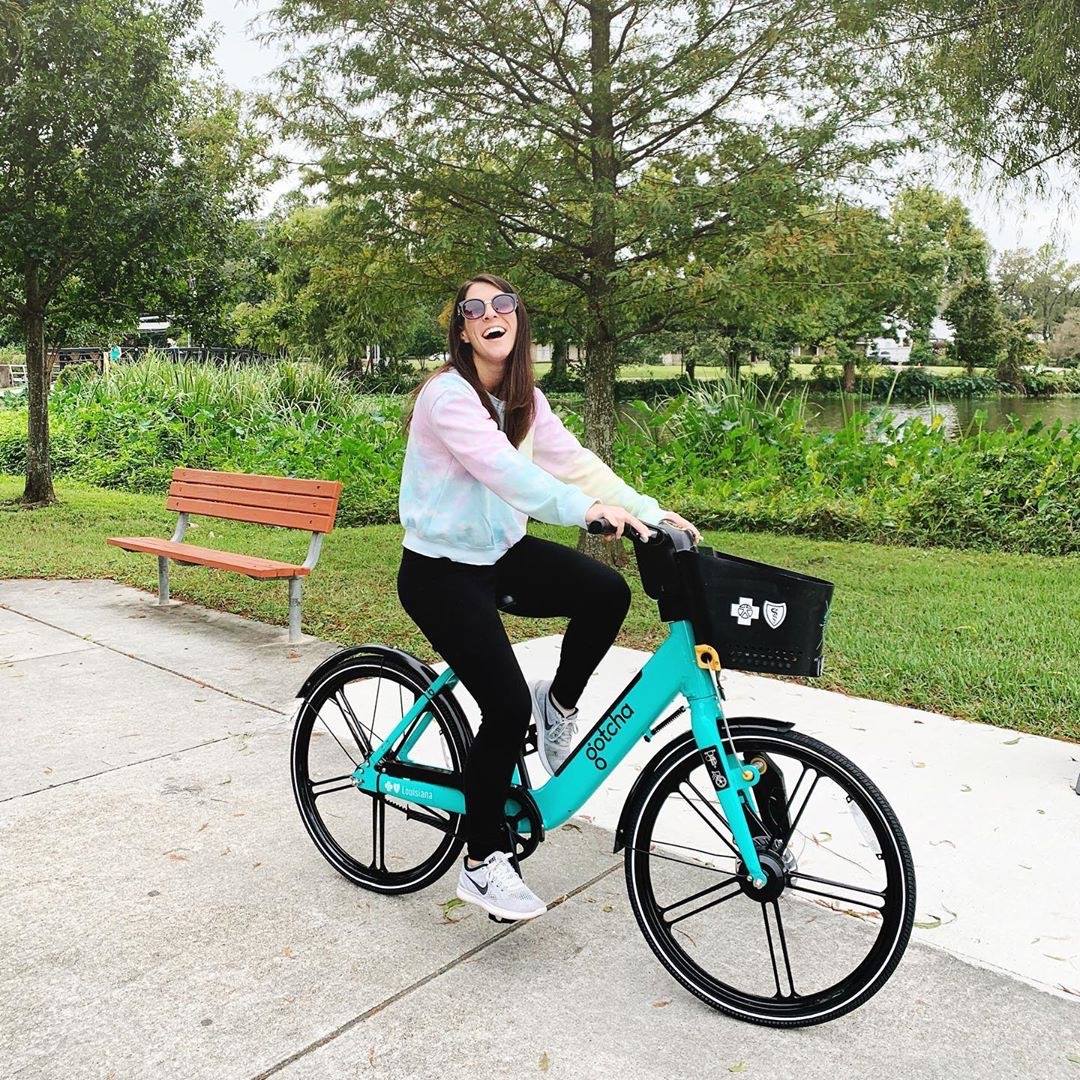
A Gotcha user trying out an e-bike offering.
Can you tell us a bit about the particular markets and regions you serve, and how you picked them?
Originally, we’re headquartered in Charleston, South Carolina, so we’ve grown from the East Coast. If you look at our website, RideGotcha, you’ll see all of our contracted systems and a lot on the east coast, primarily universities and mid-sized markets. We don’t launch in downtown Chicago, it’s not our bread and butter. We look just mainly at universities and mid-sized municipalities as actually the larger opportunity. There’s some 700 mid-sized markets and over 3,000 universities, so that really has been where our relationships are and it’s where our growth is going to continue to be. We’ve spent the past, really two years from a business development cycle, signing partnerships with those markets and we’re now just at kind of the beginning of the execution of it. I think we’ll deploy in some 50 or 60 markets over the next 8 months and again here all contracted. because of that growth we spread west. we’re the exclusive operator for San Gabriel valley, we’ve got the contract for Richmond, CA outside of San Francisco in the Bay Area, it was just announced that we were awarded Sonoma and Marin county out there as well. So there’s a lot more expansive growth on the West Coast, but a lot of our roots are in the south and southeast.
People view the stakes in my opinion sometimes incorrectly and I think it’s because of the idea of blitz-scaling and how you grow a business. I think the app world can’t be translated to the physical asset world, which is what shared mobility is. It’s not really a land grab, it’s a long term play of being the partner of choice. And the only way to do that is through the partnership mentality, you can’t force a municipality or university to do what you want and the people who have done that have learned a very expensive lesson, that that’s not the right temperament.
You also seem to have a real foothold on several college campuses; would you say you’re seeing greater success in cities or at colleges?
It’s a great question because it varies. I think our mid-sized municipalities have performed very well. I’ll tell you, we launched in Raleigh, NC, Mobile, AL, we’ve got a great system here in Charleston, SC, and they have all performed in excess of our expectations, almost from day one. Exclusive, we’re the sole provider, along term contracts, in great markets. And our universities, depending on when we launched the system, really triggers how quickly it gets to success or profitability, but we’ve got some amazing partners, University of Alabama, UGA in Athens, a lot of the universities in the UNC system, UNC Charlotte, UNC Chapel Hill. These are large universities with big student bodies and I think we’re starting to see really strong adoption rates of the demographic who has no interest in driving in a single passenger car. So I think that furthers why we focus on those markets is you’ve got this 18-34 year old demographic which is really strong in college towns that are next to your city. You could easily see somebody leaving UNC Chapel Hill and then moving and taking a job in Raleigh, and to be able to transition with them from campus to that mid-sized market is definitely part of our plan and we’re starting to see it really work, which is exciting.
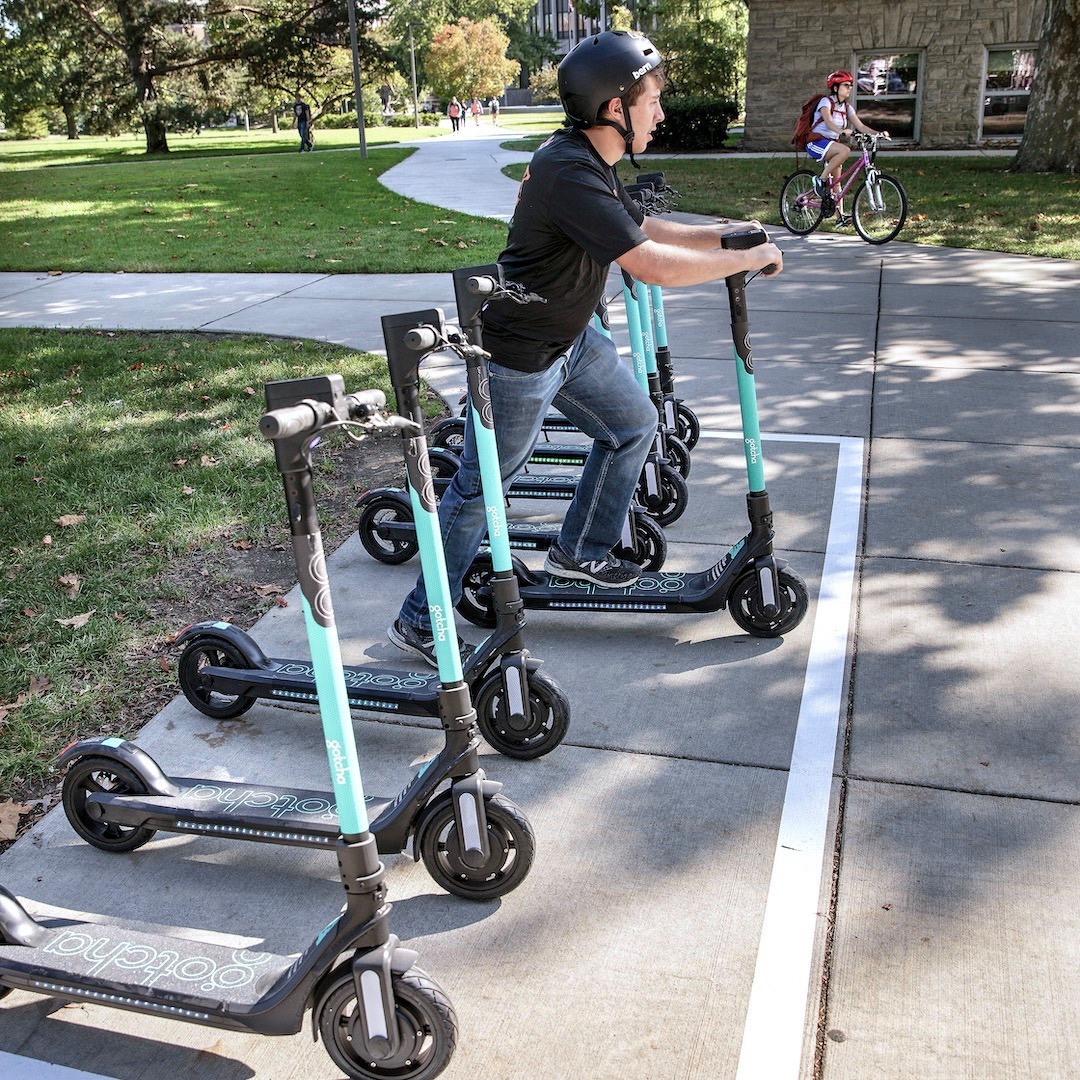
A Gotcha rider about to scoot through campus at Michigan State University.
Given the current state of the world, are any of your markets shut down? Have you pulled vehicles or increased cleaning/disinfecting of shared vehicles?
Gotcha’s mobility products will be available as long as they’re allowed on the streets. The company will temporarily suspend operations should government requirements supersede. While the general public needs to employ social distancing to help minimize the spread of COVID-19, Gotcha will continue to follow CDC guidelines to properly clean its products.
What sort of short term impacts are you seeing/expecting to see?
In the short term, we’ve pivoted our business model in the face of coronavirus to support local businesses and their employees by offering our mobility products for delivery services.
Not to try to turn a potentially morbid situation into a good one, but I’ve been hearing a lot of talk about how now is the time to reclaim the streets and build out cycling infrastructure and not give the streets back once the lockdown/quarantines end. I’m assuming that could be nothing but good for micromobility.
It’s like you said, you said it correctly, it’s not to exploit a situation that’s pretty awful, but situations like this change people’s mindset. And I think it changed how we interact with people, I think it changes how we travel, and I’ve always said that a shared mobility device, in the right environment—cars are great for a multitude of reasons—but in high density areas, on college campuses, this is the better, safer, more enjoyable way to move around, and it’s more affordable, so I think that sometimes you get into situations like this because of necessity people try something for the first time and really embrace it, and I think that could really be what happens with the shared mobility industry.
In the short term, we’ve pivoted our business model in the face of coronavirus to support local businesses and their employees by offering our mobility products for delivery services.
One thing that really stands out about Gotcha is your unique vehicle mix. You offer not just traditional e-scooters, but bikes, trikes, small electric vehicles, and now you also have OjO’s unique sit down scooter in the mix. Can you tell us a bit about your differentiated fleet, and how consumers have responded?
One big change is we went from pedal bikes that were non-electric to an all-electric model, so now everything we build going forward is electric. I think the standup scooter was the catalyst for that, where people started to view these things as a mode of transportation and the electric element just helps that for a multitude of reasons. When we looked at that, we said we think an e-bike is crucial, we think it’s a product that will stand the test of time, from an age standpoint, young and old can ride it, physicality isn’t as important so it opens up a big demographic who didn’t think that they could ride a bike as a mode of transit. So I think that’s always gonna be the product that’s part of our portfolio, but what we looked at is if we’re gonna displace the single occupancy car, then we’ve gotta have a variety of products because the car industry does. Big pickup truck for when you need it, a small electric hybrid when you need that, and everything in between, and human beings I think kind of demand that. So we designed a product portfolio that I think today is a good solution for folks, but what I’ll say is it’s not the end-all be-all, there’s still gonna be a lot of evolution and growth in the product mix piece of it.
We’re in a unique position in the way we kind of grew, as Bird and Lime-to no fault of their own-as you raise that volume of capital, you’ve got to make a choice of what you’re gonna focus on and I think the two of them were focused on trying to get world domination between the two of them. We’ve just grown differently, not right or wrong, we’ve just grown differently, and our partners, it resonated with them. We’re not built to go to a partner and be like “hey, you should take scooters, scooters are the only thing you need” because they have so many other problems, and I think it’s naive to say that the standup scooter is the only product that people should move around on. And it’s the game changer in the space, though I think it’s an important piece of the puzzle.
Regarding your variety of vehicle offerings… does every city get an amount of all the vehicles? Or are they strategically deployed depending on the needs of the locale?
Every market is different. We work with cities and universities to determine what mobility products work best for their market and how many are needed based on the population and density of the service area.
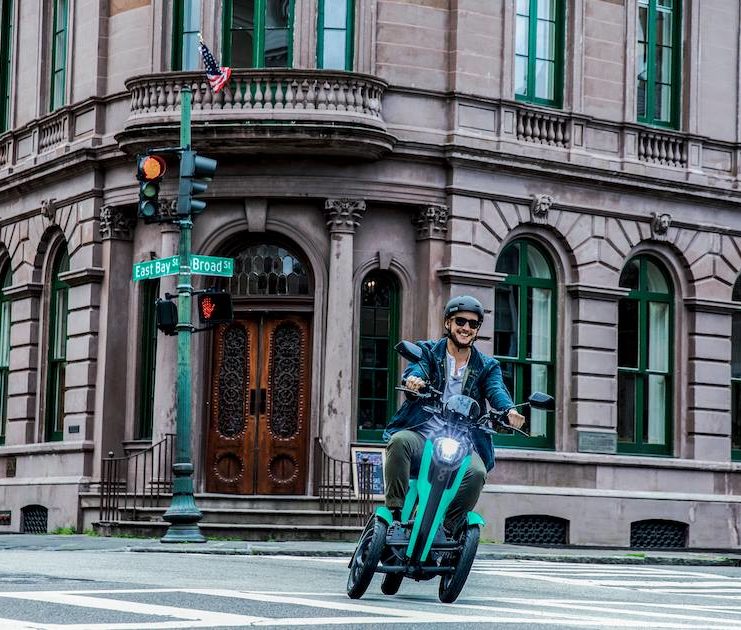
This Gotcha rider is taking their unique trike for a spin in Charleston, South Carolina.
Regarding OjO and Last Mile, how have things changed since the acquisition?
We’ve actually had a pretty successful integration of the two companies. From a branding standpoint, the operating company will be Gotcha. So the brand that consumers will interact with on all the products will be Gotcha, the app that we use will be our Gotcha mobility app that’s in the App Store and in Google, and then the OjO name really will go away and switch to Mile at the corporate level. So the holding company, the publicly traded company, is Last Mile Holdings. Those will really be the two names, the two brands that people will see.
Are you expecting Last Mile to acquire any other mobility operators in the near term?
We’re pretty opportunistic about it. I think consolidation will continue to happen. And I think that if there’re like-minded companies that fit our model, then sure, I think we’d be open to evaluating that and I think it’s an important part of this next leg of the shared mobility space. We’re actively evaluating those types of opportunities.
Last but not least, what do you think the future of micromobility holds?
I think setting aside the coronavirus, this has been obviously jarring for all industries, it’s been a real challenge for shared mobility in some categories. It’s hurt some vendors, though actually we’ve seen an uptick in ridership in a lot of markets. We’ve also pivoted to do delivery to partner with local restaurants in all of our markets where they’re using our products to deliver their food by their own employees so they’re not outsourcing that to an Uber or a DoorDash. But I think that that’ll subside when this does go away, and I believe that it will. I think there’s going to be a handful of players who continue to thrive. You mentioned on the top of the call that there was a lot of startups in this, the barrier to entry was a little bit of money and access to scooters or bikes and people are now realizing that it’s a very difficult business, if you’re not a good operator you will go out of business, and if you’re not able to raise the right type of money, you’d have the same fate. So, I think 2020 will be a lot of that: folks who just kind of pack up shop because they don’t really have what it takes to survive in this space. But that being said, I think this year’s also gonna be continuous growth where consumers are more and more excited to get out of their cars, onto an e-bike, onto a scooter and onto something electric, and that to me is wildly exciting.
To learn more about how resilient mobility operators are rising to coronavirus’ challenges, join us for the inaugural edition of CoMotion LIVE, a new webinar series examining the most pressing mobility and economic issues of the day.
Header image courtesy Gotcha
